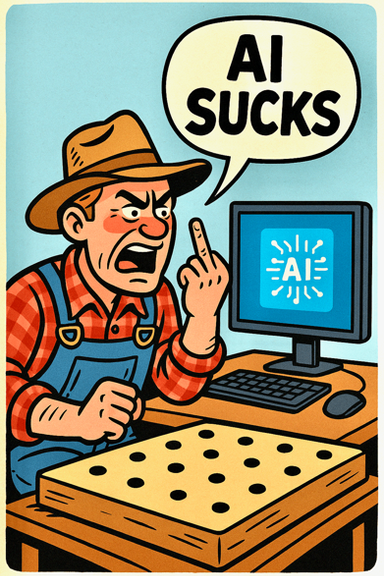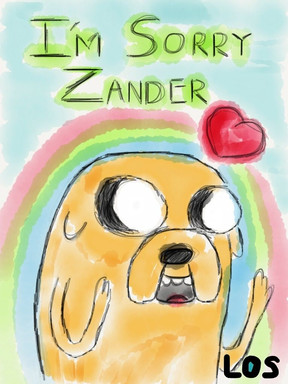HOME | DD
 DaBair — An outdated symbol that has no place in 2020.
DaBair — An outdated symbol that has no place in 2020.

Published: 2020-10-17 15:42:07 +0000 UTC; Views: 1910; Favourites: 36; Downloads: 0
Redirect to original
Description
I know I rarely make stamps related to autism, but this is another one I think that really needs a stamp.One of the most controversial issues surrounding autism is the use of the puzzle piece to symbolize autism, in particular the blue puzzle piece used by the dreaded Autism Speaks. The symbol is frequently seen at autism-related events and used on all sorts of paraphernalia. Many neurotypical people see the puzzle piece as a symbol of autism. Now you may ask: how can something that symbolizes us be harmful to us? Unfortunately, many of these people don't know the history behind it, and how it is loaded with negative connotations.
The puzzle piece is disliked by the majority of autistic people, especially among the high-functioning crowd. We have plenty of good reasons to dislike the puzzle piece as a symbol of autism.
The first reason is one that hits a lot harder once you hit puberty: the puzzle piece is childish. A puzzle is a toy, and while there are plenty of adults who enjoy putting together jigsaw puzzles (larger jigsaw puzzles with hundreds or even thousands of pieces are marketed to older kids and adults), it's still associated with children. The usage of bright primary colors also makes it look childish. It also promotes one of the most deadly misconceptions about autism: that autism is a childhood disorder that goes away when kids grow up. Autism DOES NOT go away. Autism is FOREVER. I'm 28 and I'm still as autistic as I was when I was a little kid. If you're born with autism, you're autistic for the rest of your life. Some of the first children to be diagnosed with autism are still alive and they are in their 80s and 90s. On top of that, it sheds light on one major problem of autism advocacy: the inordinate focus on autistic children to the exclusion of autistic adults. My neurologist (whom I had been seeing for nearly 25 years) retired last year and my parents are struggling to find a replacement because there are very few with knowledge of autistic adults. Not to mention autistic adults hate being treated like children.
The puzzle piece also promotes the idea that autism is a problem that needs to be solved. Basically, the whole bogus idea that autism needs to be cured. It also gives the impression that autism is a mystery, something to be figured out. I will say this: autism is hard to understand for those who don't have it. However, this has the implications that autistic people are not part of regular society, and this alienates us from neurotypical people. Worse yet, it treats us as victims who need to be coddled. Blue is a frequently used color because autism is mostly found in males. Unfortunately, this is sometimes used to exclude autistic females, who are often ignored in autism awareness.
But worst of all is this: the puzzle piece is often used to silence autistic people and ignore our feelings about things. To most of us, including myself, autism is a part of who we are. It's part of what makes us us. Trying to "cure" us is like trying to take away part of our identity. The cure narrative promotes an autism activism where Autism Speaks and misguided parents dominate the scene and autistic people themselves are reduced to objects.
And now for a little history lesson from a history buff. The puzzle piece was first created in 1963. Back then, people really did not understand autism. Also, life for an autistic person could be downright terrifying. Autism research was virtually monopolized by the cruel, heartless monster of a "doctor" Bruno Bettelheim, who promoted the "refrigerator mother" theory of autism (the theory that autism is supposedly caused by cold, unloving mothers), which ended up getting many autistic kids taken away from their parents and put into "schools" (the Willowbrook School being one infamous example) where they were treated like animals and denied contact with the outside world. Autistic children were beaten and kicked, kept in filthy conditions, and sometimes even molested. Occasionally, this treatment actually lead to autistic children dying. As for Bruno Bettelheim, he silenced doctors who questioned him and remained virtually unopposed until the early 70s, when his hateful theories were finally discredited. I hope he is burning in hell as I type this.
Now back to the puzzle piece. In its early history, it was accompanied by an image of a crying child, codifying the idea that autism is a tragedy. This symbol gave many neurotypical people the idea that autism was a disease, something to be "cured". Thankfully, the crying child image isn't used much anymore, but unfortunately the puzzle piece still is. In 1999, the puzzle piece ribbon was introduced. While I do admit it is less problematic than an image of a crying child, it still carried the loaded connotations of the puzzle piece. But worse was yet to come. In 2005, Autism Speaks formed and immediately adopted the blue puzzle piece as its logo.
Autism Speaks' influence is tremendous - and tremendously scary. They are omnipresent in discussions about autism. Many companies have ties to them. However, they promote pretty much every misconception about autism in the book, from autism being a tragedy to autism being a childhood disorder to autism needing to be "cured", they brainwash parents with inaccurate information about autism, and they silence autistic people and lack autistic people among their ranks. They even defended their use of the puzzle piece on multiple occasions. While most parents of autistic people are well-meaning and want to help their kids, Autism Speaks is anything but well-meaning. It's a monstrous organization that dehumanizes us. It does not deserve all the positive attention it gets.
Luckily, there have been a few gains in our favor. In 2018, the journal Autism dropped the puzzle piece from its logo. Some organizations that once promoted the cure narrative are now moving away from it in favor of more inclusive narratives. Many autistic activists use alternative symbols, the most popular being the rainbow infinity sign. Unlike the puzzle piece, the rainbow infinity sign was created by an autistic person and receives much more positive feedback. There has also been talk of reclaiming the puzzle piece, but I personally think the negative history is way too loaded for that.
So there you have it. The puzzle piece as a symbol for autism is a relic of a past era that promotes misconceptions about autism. It's time to put it out of its misery and replace it with something more positive. We are not puzzle pieces, we are people and we deserve to be treated as people.
Related content
Comments: 11

👍: 0 ⏩: 0

👍: 3 ⏩: 1

👍: 0 ⏩: 0

👍: 1 ⏩: 1

👍: 1 ⏩: 0

👍: 1 ⏩: 0

👍: 1 ⏩: 1

👍: 1 ⏩: 0

Thank you for speaking out! What really gets under my skin is that there are assholes out there who treat autism as a form of stupidity! I don't know what autism actually is (nor do I know whether or not I have it, so I can't speak from personal experience), and even I am offended by that treatment! If those types of people think autism = stupidity, they need a dictionary thrown at their skulls! And preferably some concussions.
👍: 1 ⏩: 0

👍: 1 ⏩: 0
























